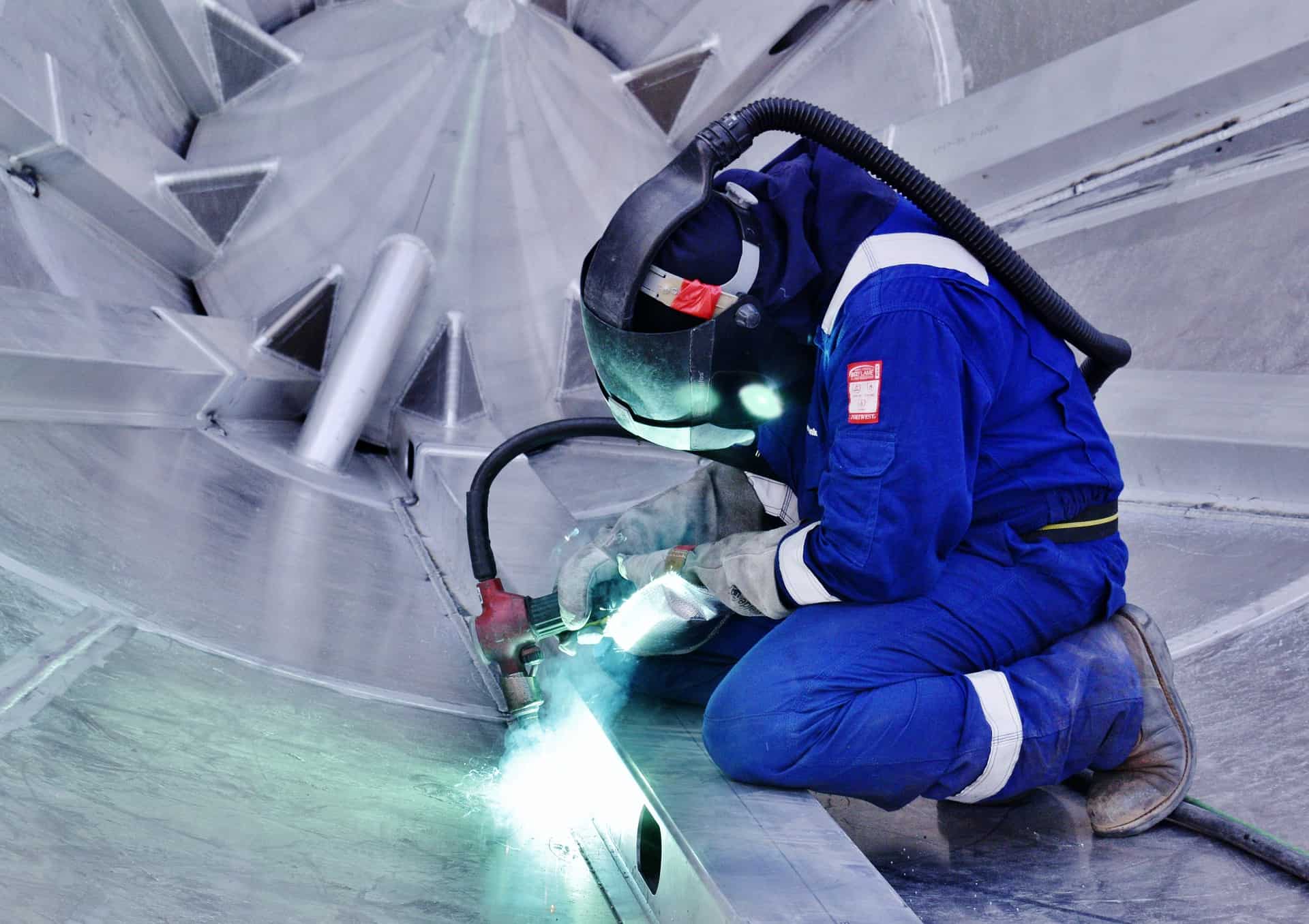Welding is an essential industrial process, but it comes with inherent risks. Welders are exposed to hazards such as intense heat, harmful fumes, ultraviolet (UV) and infrared (IR) radiation, and the potential for burns and injuries. Ensuring the safety of welders is paramount, and recent advancements in protective solutions are enhancing their ability to work safely and efficiently. This article delves into the latest protective measures and technologies designed to safeguard welders.
Osebna zaščitna oprema (OZO)
1. Advanced Welding Helmets: Modern welding helmets have evolved significantly, offering enhanced protection and comfort. Key features include:
- Auto-Darkening Filters (ADF): These filters automatically adjust the shade level based on the welding arc’s intensity, protecting the welder’s eyes from harmful UV and IR radiation while allowing clear visibility when not welding.
- Lightweight and Ergonomic Designs: Contemporary helmets are designed to be lighter and more comfortable, reducing strain on the neck and head.
- Improved Lens Technology: High-definition lenses provide better clarity and color recognition, improving weld quality and reducing eye fatigue.
2. Respiratory Protection: Exposure to welding fumes can lead to serious health issues, including respiratory diseases and cancer. Innovations in respiratory protection include:
- Powered Air Purifying Respirators (PAPRs): These systems use a battery-powered blower to force air through a filter, providing clean, breathable air inside a helmet or hood.
- Disposable and Reusable Respirators: Advanced materials and designs ensure a snug fit and effective filtration of particulate matter and gases.
3. Protective Clothing: Proper protective clothing is essential to shield welders from heat, sparks, and molten metal. Recent improvements include:
- Flame-Resistant Fabrics: New materials like treated cotton, leather, and specialized synthetics offer enhanced flame resistance and durability.
- Heat-Reflective Coatings: Some protective garments feature coatings that reflect heat, keeping the welder cooler and more comfortable.
- Ergonomic Designs: Modern protective clothing is designed for better mobility and comfort, allowing welders to move freely while staying protected.
Safety Systems and Technologies
1. Fume Extraction Systems: Effective fume extraction is critical for maintaining a safe working environment. Advanced systems include:
- Portable Fume Extractors: These units can be moved to different work areas, providing flexible fume extraction solutions.
- On-Torch Extraction: Integrated into the welding torch, these systems capture fumes directly at the source, improving efficiency and reducing exposure.
- High-Efficiency Filters: Modern fume extractors use high-efficiency particulate air (HEPA) filters to remove harmful particles from the air.
2. Welding Curtains and Screens: Welding curtains and screens protect not only the welder but also other workers in the vicinity from harmful UV and IR radiation. Innovations in this area include:
- Improved Materials: New materials offer better flame resistance and durability, ensuring long-lasting protection.
- Modular Designs: Modern screens and curtains are often modular, allowing for easy setup and customization of the welding area.
3. Safety Training and Monitoring: Advancements in digital technology are transforming safety training and monitoring. Key developments include:
- Virtual Reality (VR) Training: VR simulations provide immersive training experiences, allowing welders to practice skills and safety protocols in a risk-free environment.
- Wearable Safety Devices: Wearable technology, such as smart helmets and vests, can monitor vital signs and environmental conditions, alerting welders to potential hazards in real-time.
- Safety Management Software: Integrated software systems help track safety protocols, incident reports, and compliance with safety standards, ensuring a proactive approach to workplace safety.
Ergonomics and Human Factors
1. Ergonomic Tools and Equipment: Ergonomics play a crucial role in reducing fatigue and preventing musculoskeletal injuries. Innovations in ergonomic tools and equipment include:
- Lightweight Welding Torches: Designed to reduce hand and arm fatigue, these torches are easier to handle and maneuver.
- Adjustable Workstations: Height-adjustable workbenches and fixtures allow welders to work in comfortable positions, reducing strain.
- Anti-Vibration Gloves: These gloves help absorb vibrations from welding tools, protecting the welder’s hands and arms from long-term damage.
2. Exoskeletons: Exoskeletons are wearable devices that support the body and enhance physical capabilities. In welding, they offer several benefits:
- Load-Bearing Support: Exoskeletons can help bear the weight of heavy tools and equipment, reducing physical strain.
- Enhanced Endurance: By supporting the welder’s body, exoskeletons can increase endurance and reduce fatigue, enabling longer work periods.
Mental Health and Wellbeing
1. Stress Reduction Programs: The physical demands and hazards of welding can lead to stress and mental health issues. Programs designed to reduce stress and promote wellbeing include:
- Mindfulness and Relaxation Techniques: Training welders in mindfulness and relaxation can help manage stress and improve focus.
- Work-Life Balance Initiatives: Encouraging a healthy work-life balance through flexible schedules and supportive workplace policies can enhance overall wellbeing.
2. Supportive Work Environment: Creating a supportive and inclusive work environment is essential for the mental health of welders. Initiatives include:
- Open Communication: Encouraging open communication about safety concerns and mental health issues can foster a supportive workplace culture.
- Access to Resources: Providing access to mental health resources, such as counseling services and support groups, can help welders manage stress and maintain mental health.
Zaključek
The welding industry has made significant strides in enhancing the safety and wellbeing of welders through advanced protective solutions and innovative technologies. From state-of-the-art personal protective equipment to ergonomic tools and mental health initiatives, these advancements are transforming the way welders work, making the profession safer and more sustainable. As technology continues to evolve, ongoing commitment to safety and innovation will ensure that welders can perform their critical work with confidence and protection.

